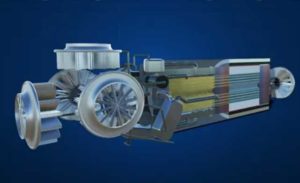Microreactor technology promises clean, safe energy

(Juneau) – Tuesday, Governor Mike Dunleavy introduced the first bill in a package of energy legislation intended to promote energy independence, long-term cost reductions, and competitive markets in both urban and rural Alaska.
Senate Bill 177 will allow communities across Alaska to explore new opportunities related to microreactors. Ranging from just 0.1% to 5% of the power output of traditional nuclear power facilities, microreactors are the subject of much research across four national labs with over 20 different prototypes in various stages of development. Two significant projects are already being planned in Alaska at Eielson Air Force Base and in Valdez with the support of the Copper Valley Electric Association.
“Twelve percent of the planet’s sustainable microgrid power is produced right here in the Last Frontier. No one out-innovates Alaskans,” said Governor Mike Dunleavy. “For communities seeking more options to end their dependence on diesel and heating oil, we want to ensure that our statutes give them the opportunity to explore what many experts believe may be a generational leap forward in terms of clean, reliable, and cost-effective off-grid power.”
“Copper Valley Electric Association supports the governor’s legislation to streamline the State’s permitting process for microreactors. With a feasibility study already underway in Valdez, this legislation ensures Alaska remains on track to be an early leader in microreactor technology,” said Copper Valley Electric Association CEO Travis Million.
Unlike traditional nuclear technology, microreactors are subject to new safety requirements that allow them to operate with minimal oversight and without fear of a meltdown thanks to modern passive cooling systems and newer, accident-tolerant fuel types. Operating more like a battery than a traditional reactor, a microreactor can be delivered to a remote site, provide electricity and district heating (a centralized heating system for communities) for over a decade, and then be returned to the manufacturer for replacement along with all generated waste.
SB 177 was referred to the Senate Resources and Senate Community and Regional Affairs committees. For more information, see the microreactor FAQ.
###
